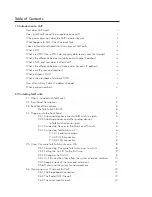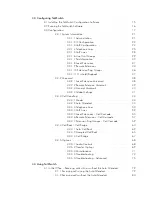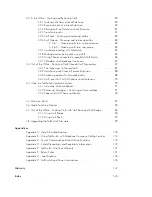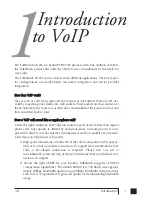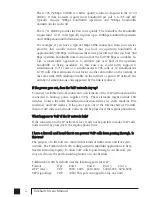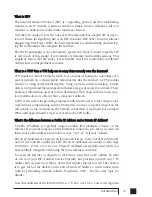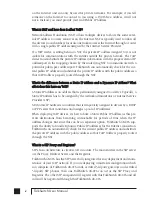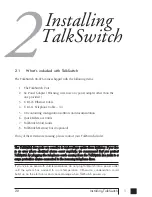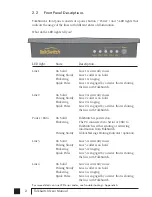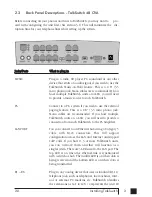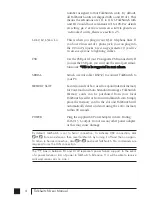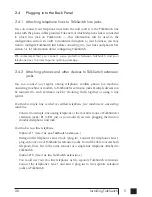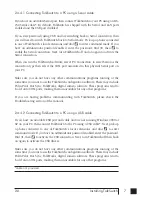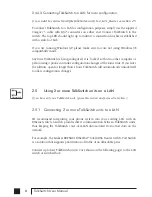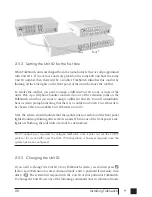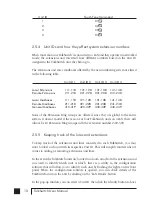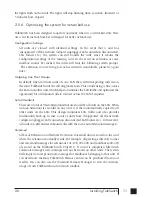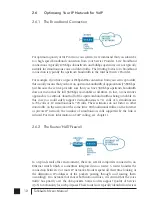
W
Wh
ha
att iiss S
SIIP
P??
The Session Initiation Protocol (SIP) is a signalling protocol used for establishing
sessions in an IP network. A session could be a simple two-way telephone call or it
could be a collaborative multi-media conference session.
Over the last couple of years, the Voice over IP community has adopted SIP as its pro-
tocol of choice for signalling. SIP is an RFC standard (RFC 3261) from the Internet
Engineering Task Force (IETF), the body responsible for administering and develop-
ing the mechanisms that comprise the Internet.
The IETF’s philosophy is one of simplicity: specify only what you need to specify. SIP
is very much of this mould; it just initiates, terminates and modifies sessions. This
simplicity means that SIP scales, it is extensible, and it sits comfortably in different
architectures and deployment scenarios.
W
Wh
ha
att iiss a
a V
VP
PN
N?? C
Ca
an
n a
a V
VP
PN
N h
heellp
p m
mee tto
o cca
arrrryy d
da
atta
a sseeccu
urreellyy o
ovveerr tth
hee IIn
ntteerrn
neett??
VPN stands for Virtual Private Network. It is a means of having the advantages of a
private network on a shared public infrastructure like the Internet. A VPN provides
security by using encryption/decryption. Using a process called ‘tunneling’, private
data is encrypted and then encapsulated before being sent across the network. These
packets of information are sent to their destination. Only those with the correct pro-
tocol information are able to enter a company’s network.
A VPN is very useful for providing employees with remote access to the company net-
work without compromising security. Encryption can have a negative impact on the
call quality, as the overhead on the network connection is increased. For example,
IPSec adds approximately 10 per cent overhead to VPN traffic.
W
Wh
ha
att’’ss tth
hee d
diiffffeerreen
nccee b
beettw
weeeen
n a
a P
Pu
ub
blliicc IIP
P A
Ad
dd
drreessss a
an
nd
d a
a P
Prriivva
attee IIP
P A
Ad
dd
drreessss??
A Public IP Address is a globally unique number that identifies a device on the
Internet. If you want someone on the Internet to connect to you, then you must tell
them your public address. Also known as your “real” or “external” address.
Private IP Addresses are typically assigned to devices on a LAN (Local Area Network)
and are not routable outside the LAN. Private IP Addresses are usually in the range
192.168.x.x, 172.16.x.x or 10.x.x.x. These IP addresses are typically used where you
have multiple computers all sharing the same Internet connection.
To access the Internet, a computer or VoIP device must have an IP address. So what
do you do if your ISP (Internet Service Provider) has provided you with only 1 IP
address but you have more than 1 device that requires Internet access? The solution
is to give each of the devices on the LAN a Private IP Address. A router makes them
work by performing Network Address Translation (NAT - See the next topic for
details).
Note that addresses of the form192.168.x.x, 172.16.x.x or 10.x.x.x are not recognized
iii
Introduction
TS manual 11th ED_CVA_v11_CD_Release.qxd 7/13/2004 3:33 PM Page iii
Содержание TALKSWITCH 48-CVA
Страница 1: ...Installation and User Guide DESKTOP PHONE SYSTEM TalkSwitch 48 CVA v3 10...
Страница 109: ...101 4 0 Using TalkSwitch...
Страница 111: ......
Страница 145: ......



